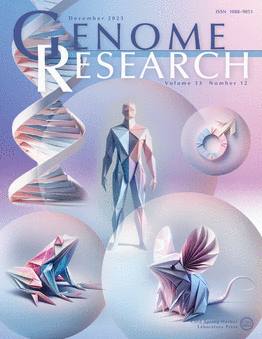Mapping multitissue regulatory variants reveals a liver-centric coexpression network associated with duck egg-laying performance
IF 5.5
2区 生物学
Q1 BIOCHEMISTRY & MOLECULAR BIOLOGY
引用次数: 0
Abstract
Poultry egg production is shaped by the intertwined action of multiple physiological systems, greatly magnifying the complexity of its underlying genetic regulation. Although multitissue mapping of regulatory variants offers a powerful route to untangle this complexity, comprehensive data sets in ducks remain scarce. Meanwhile, the contributions of peripheral systems beyond neuroendocrine regulation on poultry egg production are still largely unexplored. Here, we generate 979 RNA-seq samples from the liver, ovary, oviduct shell gland, and spleen, along with matched whole-genome sequencing data from 307 egg-laying ducks. We map cis-regulatory variants associated with gene expression (eQTL), alternative splicing (sQTL), and 3′ alternative polyadenylation (apaQTL), yielding 14,074, 6267, and 4994 genes with at least one significant eQTL, sQTL, and apaQTL, respectively. By integrating this resource and GWAS results, we confirm that ABCG2 expression in the shell gland specifically regulates eggshell color, with additional involvement of ENOPH1’s 3′APA sites in both the shell gland and liver. In addition, expression of LOC101800576 and LOC101790890 in the shell gland, of LOC119713219 in the ovary, and of GLP2R in the spleen is causally linked to declining egg production at peak laying. Last, we delineate a cross-tissue regulatory landscape underlying duck egg production and identify liver-derived modules, particularly Liver_ME1, which is mainly involved in cell cycle regulation, as central hubs coordinating with peripheral tissues affecting duck egg production. This work delivers a key resource and fresh perspectives for the genetic mechanism dissection of duck egg production and for future studies on cross-tissue regulation of reproduction.绘制多组织调控变异揭示了与鸭产蛋性能相关的肝脏中心共表达网络
禽蛋的生产是由多个生理系统的相互交织作用形成的,这极大地放大了其潜在遗传调控的复杂性。尽管调控变异的多组织映射为解开这种复杂性提供了有力的途径,但鸭子的综合数据集仍然很少。同时,除了神经内分泌调节外,外周系统对禽蛋生产的贡献在很大程度上仍未被探索。在这里,我们从肝脏、卵巢、输卵管壳腺和脾脏中提取了979个RNA-seq样本,以及来自307只蛋鸭的匹配全基因组测序数据。我们绘制了与基因表达(eQTL)、选择性剪接(sQTL)和3 '选择性聚腺酰化(apaQTL)相关的顺式调控变异图谱,分别得到14074、6267和4994个基因,其中至少有一个显著的eQTL、sQTL和apaQTL。通过整合这些资源和GWAS结果,我们证实了ABCG2在壳腺中的表达特异性地调节蛋壳颜色,并在壳腺和肝脏中参与ENOPH1的3'APA位点。此外,壳腺中LOC101800576和LOC101790890的表达、卵巢中LOC119713219的表达以及脾脏中GLP2R的表达与产蛋高峰期产蛋量下降有因果关系。最后,我们描绘了鸭蛋生产背后的跨组织调控景观,并确定了肝脏来源的模块,特别是Liver_ME1,它主要参与细胞周期调控,作为协调影响鸭蛋生产的外周组织的中心枢纽。本研究为鸭产蛋的遗传机制解剖和未来跨组织繁殖调控的研究提供了重要的资源和新的视角。
本文章由计算机程序翻译,如有差异,请以英文原文为准。
求助全文
约1分钟内获得全文
求助全文
来源期刊

Genome research
生物-生化与分子生物学
CiteScore
12.40
自引率
1.40%
发文量
140
审稿时长
6 months
期刊介绍:
Launched in 1995, Genome Research is an international, continuously published, peer-reviewed journal that focuses on research that provides novel insights into the genome biology of all organisms, including advances in genomic medicine.
Among the topics considered by the journal are genome structure and function, comparative genomics, molecular evolution, genome-scale quantitative and population genetics, proteomics, epigenomics, and systems biology. The journal also features exciting gene discoveries and reports of cutting-edge computational biology and high-throughput methodologies.
New data in these areas are published as research papers, or methods and resource reports that provide novel information on technologies or tools that will be of interest to a broad readership. Complete data sets are presented electronically on the journal''s web site where appropriate. The journal also provides Reviews, Perspectives, and Insight/Outlook articles, which present commentary on the latest advances published both here and elsewhere, placing such progress in its broader biological context.
 求助内容:
求助内容: 应助结果提醒方式:
应助结果提醒方式:


